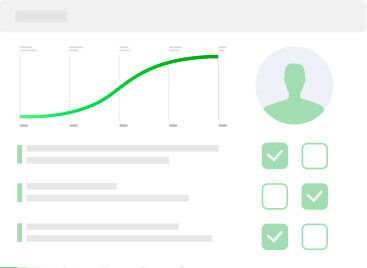60%
Clientes recomiendan
0 reseñas en diciembre
Ordenar por
You don’t expect a routine check-up to reveal anything significant, especially when you feel fine. That was my mindset before I was told about the plaque buildup in my arteries—atherosclerosis. It wasn’t just in one place; it was everywhere, including the aorta and even the cerebral arteries. The doctor explained that the symptoms I had been ignoring—occasional dizziness, some mild chest pain—were all signs of something far more serious.
The hardest part to grasp was the idea that this hardening of my arteries wasn’t just an inconvenience; it was life-threatening. I remember sitting there, hearing terms like intracranial atherosclerosis and trying to wrap my head around what it meant for my future. The word sounded heavy, both in meaning and in pronunciation, and I knew this was something I had to take seriously.
The first step was understanding what I was dealing with. The ICD-10 code for atherosclerosis became a frequent notation in my medical records, and I began researching everything from cerebral atherosclerosis causes to whether this condition could be reversed. The more I learned, the more I realized that this wasn’t something that would go away on its own. I needed a plan—a treatment plan that would address both the symptoms and the root causes.
One thing that surprised me was how varied the symptoms could be. For instance, I learned that atherosclerosis in the legs could cause pain and discomfort that I had always chalked up to overexertion or aging. I also found out that coronary atherosclerosis could be the reason behind those occasional sharp pains in my chest—pains I had dismissed as nothing serious.
The treatment options were both reassuring and daunting. For carotid atherosclerosis, there were medications that could help manage the condition, but the idea of being on drugs for the rest of my life wasn’t appealing. I also read about surgical options, which, while effective, sounded terrifying. The question of whether atherosclerosis of the aorta could be reversed weighed heavily on my mind, as I sifted through research and patient stories.
I couldn’t ignore the impact this had on my mental health. The more I thought about it, the more anxious I became. I found myself lying awake at night, thinking about how the rigidity and hardening of my arteries were slowly stealing my future. But I didn’t want to be paralyzed by fear. Instead, I decided to focus on what I could control—my lifestyle.
Diet and exercise became my new priorities. I learned that while reversing atherosclerosis completely might not be possible, slowing its progression certainly was. I adopted a heart-healthy diet, rich in fruits, vegetables, and whole grains, and started a consistent exercise routine. It wasn’t easy, but with each small change, I felt a little more in control.
The hardest part was the uncertainty. Even with all the right medications and lifestyle changes, there were no guarantees. The doctor couldn’t promise that I’d never have a stroke or heart attack, only that I was doing everything I could to reduce the risk. The question, “Can atherosclerosis really be reversed?” remained at the back of my mind, but I tried not to dwell on it.
Now, I’m living a life that’s more mindful than ever before. I’m aware of every bite of food, every step I take, and every check-up I attend. It’s a new reality, one that I never expected to face, but it’s mine now. I’m learning to live with it, to manage it, and most importantly, to not let it define me.
There’s a strange kind of clarity that comes with a life-altering diagnosis. I didn’t expect to feel that way, but when the doctor told me about the atherosclerosis found in my aorta and coronary arteries, something shifted. It was as if the fog of everyday concerns lifted, leaving only the stark reality of my health in its place. No more ignoring the signs or brushing off the symptoms—I had to face this head-on.
The words cerebral atherosclerosis and coronary atherosclerosis kept echoing in my mind. They weren’t just medical jargon anymore; they were my new reality. The doctor explained how these conditions could affect my future, from the risk of stroke to the possibility of heart disease. I found myself diving into research, trying to understand how this had happened and what I could do about it. The idea that my arteries were hardening, becoming less flexible, felt like my body was betraying me from the inside out.
Learning about the causes of atherosclerosis was an eye-opener. I had always considered myself relatively healthy, but now I realized that my lifestyle choices, combined with factors beyond my control, had led me here. The diagnosis made me rethink everything—from my diet to how I managed stress. I couldn’t help but wonder if things would have been different if I’d paid more attention earlier on.
The concept of mild aortic atherosclerosis didn’t sound too alarming at first, but when I dug deeper, I realized that “mild” didn’t mean insignificant. It was the beginning of something that could have serious consequences if left unchecked. The fact that this condition could lead to cerebral atherosclerosis, affecting not just my heart but my brain, was a wake-up call like no other.
What surprised me most was how this condition had been quietly developing over time, undetected until now. The ICD-10 code for atherosclerosis became a frequent topic of conversation with my doctor, as we discussed the best ways to manage and hopefully slow its progression. The reality was sobering: this wasn’t something that could be cured with a quick fix. It required a complete overhaul of how I approached my health.
I also had to come to terms with the impact of atherosclerosis on my future. The possibility of complications like cerebral atherosclerosis dementia or even a heart attack loomed large. These weren’t just distant threats; they were real possibilities if I didn’t take immediate action.
The more I learned, the more determined I became to fight back. I began exploring treatment options, from lifestyle changes to medications, anything that could help reduce the risk of further damage. The journey wasn’t easy, but it was necessary. Every step I took, every change I made, was a step away from the person who had ignored the signs for too long.
Now, I’m not just living with atherosclerosis; I’m actively managing it. I’ve become more mindful of my body, more aware of what I need to do to stay healthy. It’s a constant process, but one that has made me stronger and more resilient.
You know that feeling when something just doesn’t sit right with you, but you can’t quite put your finger on it? That’s how it all started for me. It was just an odd sense that something was off—nothing too alarming, just a little fatigue here, a bit of chest tightness there. I chalked it up to stress, maybe a lack of exercise, but I never imagined it was something as serious as atherosclerosis.
The day I finally sat down with my doctor to go over the test results, I learned more about my body in an hour than I had in years. Atherosclerosis, as she explained, is more than just a medical term; it’s a condition where plaque builds up inside your arteries, leading to all sorts of complications. I was dealing with severe aortic atherosclerosis, and it wasn’t just affecting my heart—it was impacting my entire circulatory system.
The more she talked, the more the reality sank in. This wasn’t just about high cholesterol or a bit of plaque here and there. We were talking about calcific aortic atherosclerosis, a condition that could lead to serious issues like aneurysms if left unchecked. I kept wondering, “How did I get here?” and more importantly, “What could I do about it?”
What surprised me most was the connection between atherosclerosis and other conditions I’d never even heard of, like renal artery atherosclerosis. The doctor explained how the plaque buildup in my arteries wasn’t just affecting my heart but also my kidneys, and how this was all interconnected. It felt overwhelming, like I was learning a whole new language—the language of my own anatomy.
One of the most difficult parts was understanding the potential consequences. When she mentioned the risk of an aneurysm caused by the atherosclerosis in my arteries, it felt like a punch to the gut. The thought that my condition could lead to something so dangerous was terrifying. But then came the big question: Could any of this be reversed?
I remember asking her, almost desperately, “Can cerebral atherosclerosis be reversed?” Her answer was cautious. While some lifestyle changes and treatments could slow the progression, the damage that had already been done couldn’t simply be undone. That was a hard pill to swallow, but it also gave me the push I needed to take action.
The pronunciation of all these medical terms—like atherosclerosis in French or even in English—was the least of my worries. What mattered was figuring out how to live with this condition. I began researching on my own, trying to understand how coronary atherosclerosis relates to coronary artery disease (CAD) and what that meant for my daily life.
The information was dense, and sometimes confusing, but I refused to let that stop me. I learned that subclinical coronary atherosclerosis is when the disease is present but not yet causing symptoms, which made me realize how lucky I was to have caught this before things got worse. It was a wake-up call, one that I needed to heed immediately.
Looking back, I realize that the signs were there all along, but I didn’t know how to read them. Now, I’m more attuned to my body and more proactive about my health. The journey hasn’t been easy, but it’s been necessary. I’ve made changes to my diet, started exercising regularly, and I’m committed to managing this condition for the long haul. Atherosclerosis might be a part of my life now, but it doesn’t define me.
- Tags 20
- Search 0
3 de 3 reseñas
Aumenta la confianza en tu marca y obtén nuevos clientes
20 000
Solicitudes Ask.Direct
1 500 000
Vistas de página al mes
13 000
Datos de clientes completados
7 000
Comentarios al mes
15 000
Me gusta en comentarios al mes

10 000
Encuestas completadas

Aumenta tu audiencia, consigue más seguidores activos
Atrae audiencias utilizando opiniones de expertos
Llevamos tu página a la cima en las búsquedas de reputación de marca — ¡gratis!
¡Atrae nuevos clientes a tus redes sociales o canales!
Sigue las estadísticas de los clics en el perfil y las vistas de contenido















